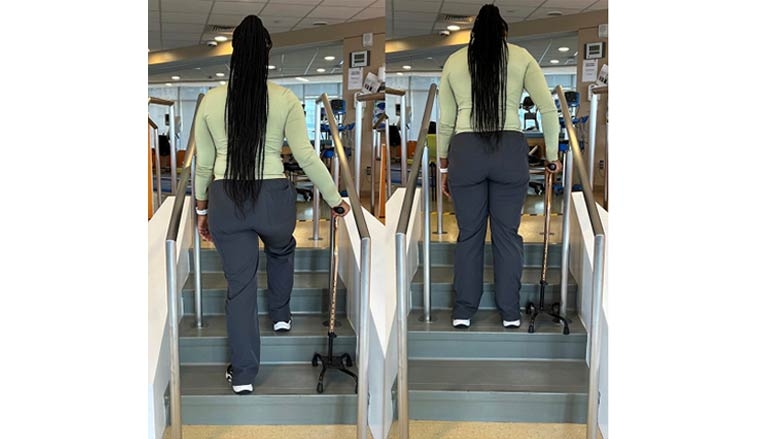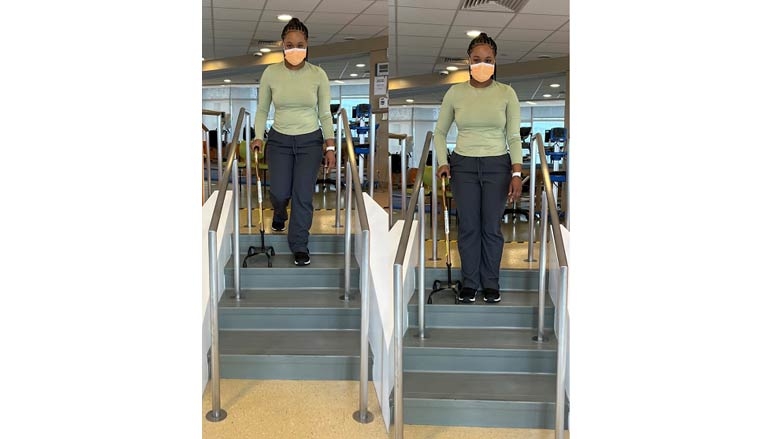Gait Training/Assistive Devices: Canes
These instructions describe how Children's Hospital of Philadelphia (CHOP) patients can safely use a cane for support and stability.
Important information:
 A cane can be used to give your child support and stability when they walk. A broad-based cane, also called a quad cane, has three or four legs and is more stable than a standard cane.
A cane can be used to give your child support and stability when they walk. A broad-based cane, also called a quad cane, has three or four legs and is more stable than a standard cane.
The cane is the correct height when your child can hold the handgrip with their arm at their side with their elbow slightly bent. If you need to adjust the height, push the metal button on the shaft in, then slide the tubing up or down. Make sure that the button pops back into place.
Patient instructions:
Walking with a cane

-
To stand up, push up from the chair with one hand and hold onto the cane with the other.
-
Hold the cane with the hand on the strong side, not on the same side as the affected leg.
-
Move the cane forward.
-
Step forward with the weaker foot. Push down on the cane for support.
-
Step ahead with the stronger foot.
Using a cane on the stairs


-
Always use the railing if one is available. Hold the cane in one hand and the railing with the other.
-
To walk up the stairs, step up onto the next step with your stronger foot, then bring the weaker foot and cane onto that step.
-
To walk down the stairs, place the cane and then the weaker foot on the next lower step, then step down with your stronger foot.
General safety tips
-
If your child needs help or supervision when walking, stand on their weaker side. Hold onto a gait belt around their waist instead of holding their clothing or arm.
-
When assisting your child on stairs, always stand below your child.
-
Never use a cane without leg tips. Replace the tips when they wear out.
-
Wear shoes that fit well. Do not wear shoes that slide off your feet or shoes with high heels or slippery soles.
-
Do not walk on uneven, slippery, or poorly lit surfaces. Remove loose rugs and tape down loose edges of the carpet to avoid tripping.
Reviewed on December 12, 2022, by Julia Fogliano, PT, DPT